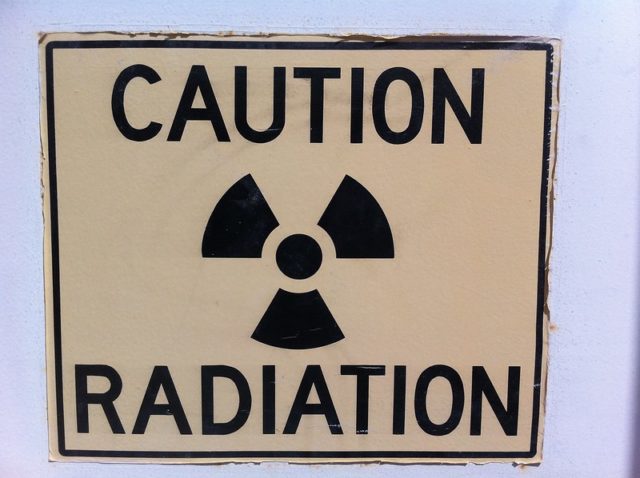
For as long as radiation has been used to treat cancer, the goal has been the same: damage the DNA of cancer cells in order to kill them. Advances in radiation therapy have made the approach more targeted, which spares healthy tissue. Radiopharmaceuticals deliver this targeted strike via engineered molecules. But the fundamental objective of damaging cancer DNA remains unchanged.
Curie Therapeutics is bringing a new twist to radiopharmaceuticals. CEO Simon Read said that rather than thinking of a radiopharmaceutical in terms of its individual components, his company approaches the molecule as a whole. In that context, a radiopharmaceutical can be configured with different payloads for different tasks, and even tasks that go beyond simply damaging cancer DNA.
The startup has been incubating for the past 18 months. On Wednesday, Curie emerged from stealth with some details about its plans along with $75 million in financing to execute them. The Series A round of funding comes from Atlas Ventures, Access Biotechnology, and RA Capital Management, the venture capital firms that formed and incubated the company.
The founding of Curie, which takes its name from a unit of measure for radioactivity intensity, is somewhat unusual. While it’s increasingly common for venture capital firms to form their own startups to advance new science, Read said Curie’s start came about from a joint effort among the three founding investors. Collectively, they saw an opportunity for radiopharmaceuticals to fill needs not met by new cell therapies and biologic drugs in treating solid tumors. Rather than form three separate and competing companies, Read said the firms decided to form a single company taking a comprehensive approach to radiopharmaceuticals.
Radiochemistry, radiobiology, and ligand design and discovery have not typically worked alongside each other within a single company in the past, said Read, who is the former chief scientific officer of rare disease drug developer Ra Pharma and is also a former entrepreneur in residence at Atlas Venture. Curie brings all of those disciplines together under one roof. Read added that in some respects, the startup’s approach borrows from antibody drug conjugates, a type of cancer therapy made with a monoclonal antibody, a cancer-killing payload, and a linker molecule that connects them. These ADC components are different depending on the therapy and the cancer target. Similarly, to build an optimal radiopharmaceutical, Read said it’s important to think about the whole molecule – the features it will have and how the different pieces will fit together.
“It’s a starting point, thinking of these molecules almost like Lego bricks,” Read said.
A radiotherapy employs one of two different types of radiation particles to damage cancer DNA. Alpha particles are more powerful, but they don’t penetrate tissue well. Smaller beta particles are better at penetrating tissue but are less potent treatments. Read said Curie stands ready to work with both alpha and beta-emitting radiopharmaceuticals, depending on what’s needed: alpha particles for smaller tumors and beta particles for larger ones.
Beyond sparking the killing of cancer cells, Curie is developing radiopharmaceuticals that offer more subtle ways of modulating what is happening within a tumor, Read said. For example, exposure to a Curie radiotherapy could spark a tumor to express antigens, making them visible for other types of cancer therapies, such as immunotherapies or DNA damage repair inhibitors. That means a Curie radiopharmaceutical could be used as part of a sequence of treatments or as part of a pairing of therapies.
“I believe radio pharmaceuticals will go from being a targeted medicine great at killing tumor cells to also being in rational treatment sequences in earlier treatment lines,” Read said.
Radiopharmaceuticals have been used to treat cancer for decades, but the field has seen renewed interest in recent years from companies large and small. Novartis spent $3.9 billion to acquire Advanced Accelerator Applications, whose therapy Lutathera in 2018 became the first FDA approved radioactive drug for treating certain cancers of the gastrointestinal tract. The pharma giant then spent another $2.1 billion to acquire Endocyte, developer of a radioligand therapy intended for tough-to-treat cases of prostate cancer.
Startups are also emerging with new approaches to radiopharmaceuticals. Last fall, RayzeBio launched with $45 million to develop a radiotherapy based on the alpha emitter actinium-225. In March, Aktis Oncology announced $72 million in Series A financing for alpha-emitting therapies that the startup intends to be less toxic to healthy tissue.
Now that Curie has placed itself in the mix of new radiopharmaceutical developers, Read said the focus is on building the drug pipeline. He declined to go into detail about that pipeline, nor would he offer an estimate for when these experimental therapies might reach clinical testing. While Curie isn’t actively seeking partnerships, Read said that that the company is open to collaborations with larger companies interested in exploring radiobiology and how targeted radiation can manipulate the tumor.
Photo by Flickr user John Jones via a Creative Commons license








